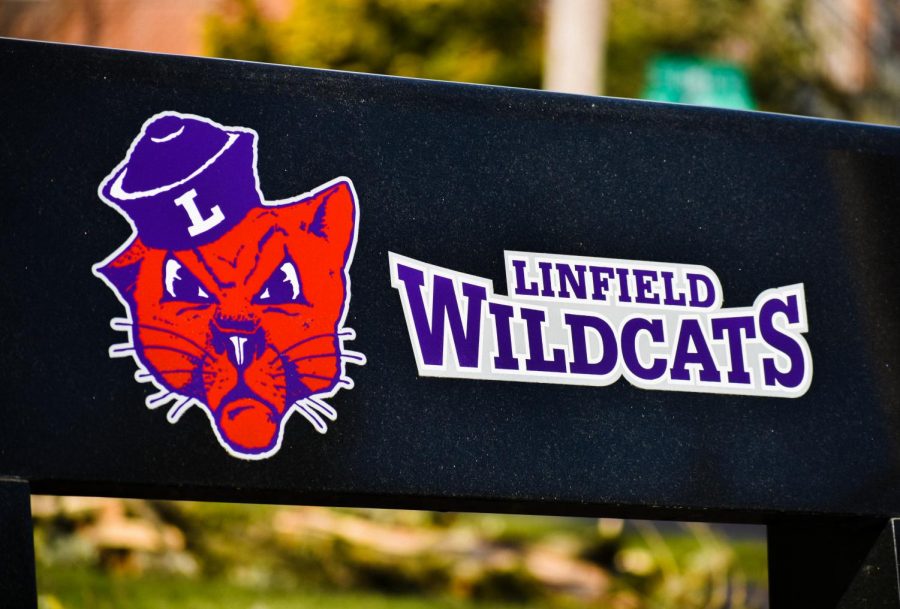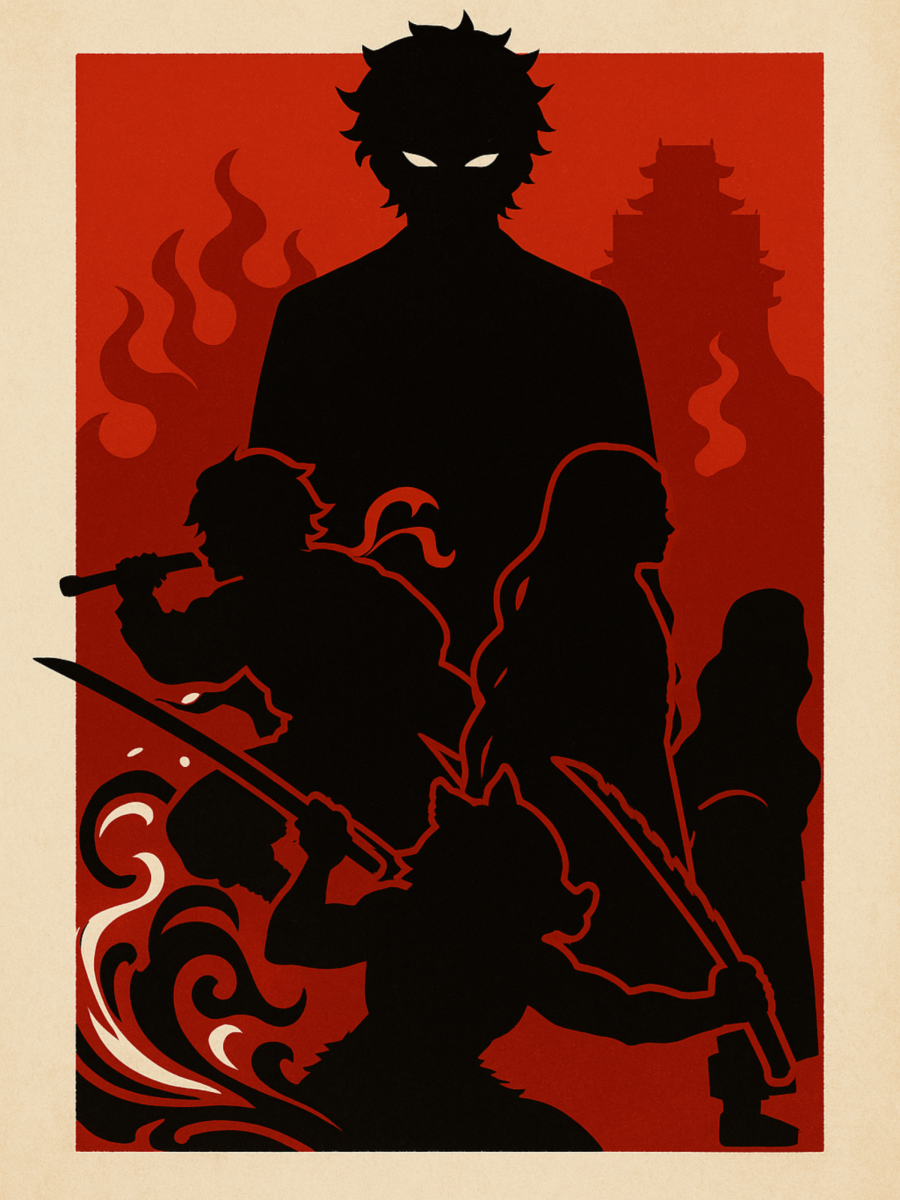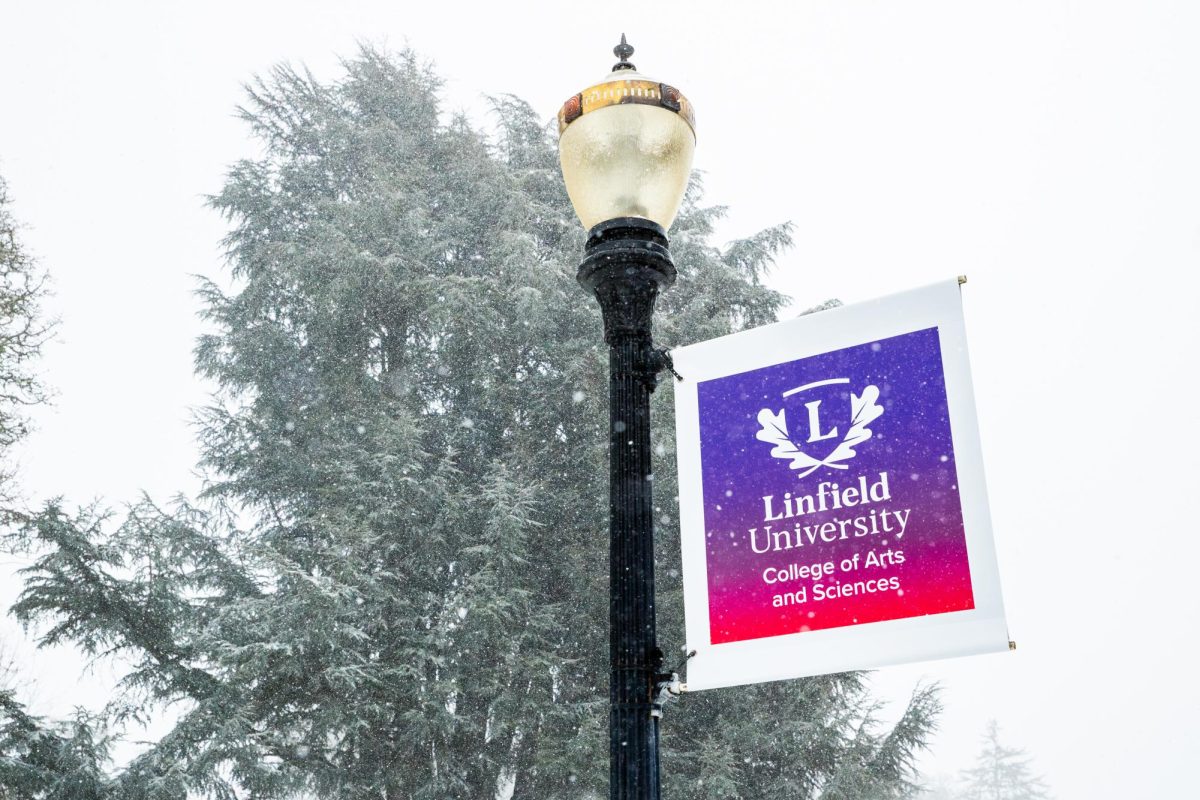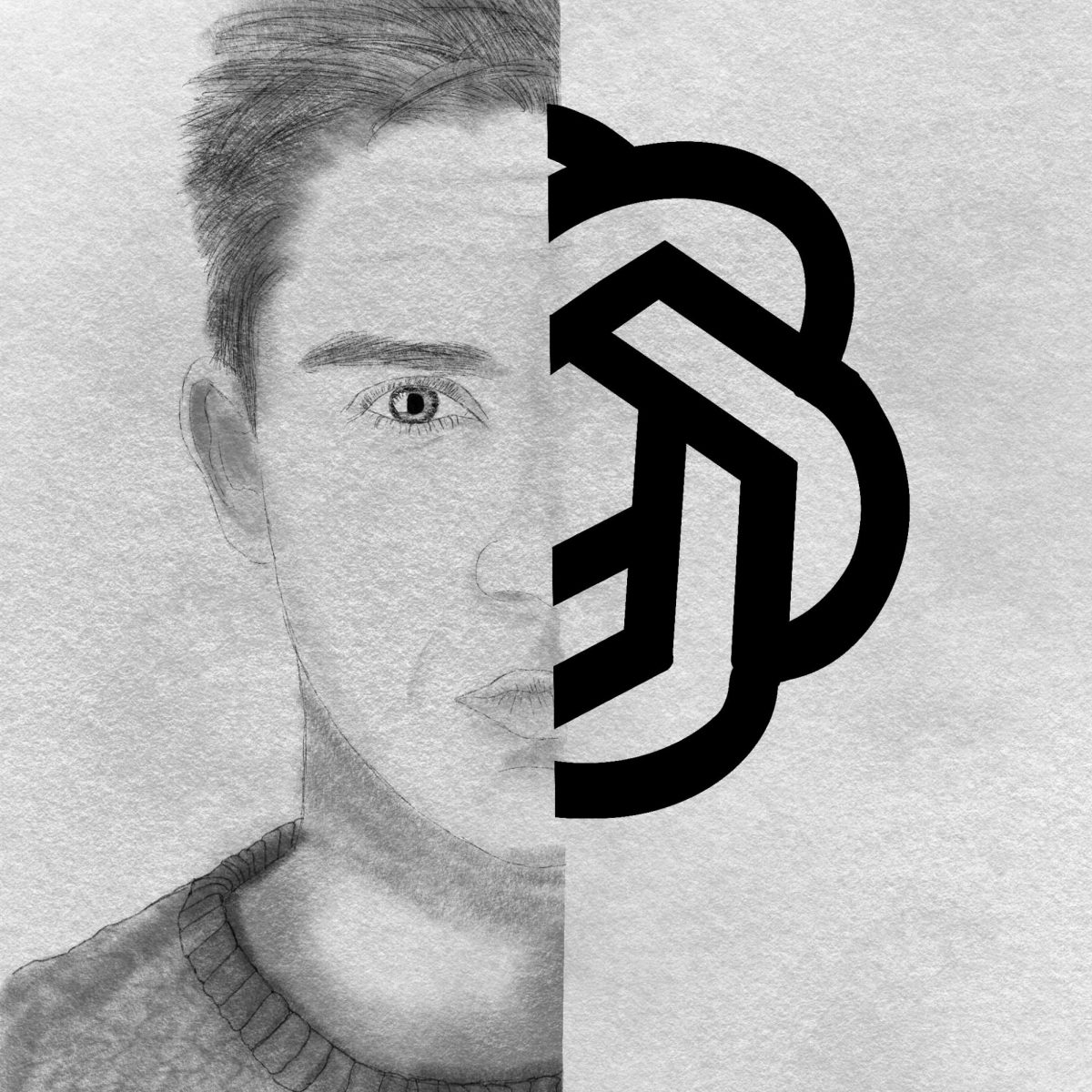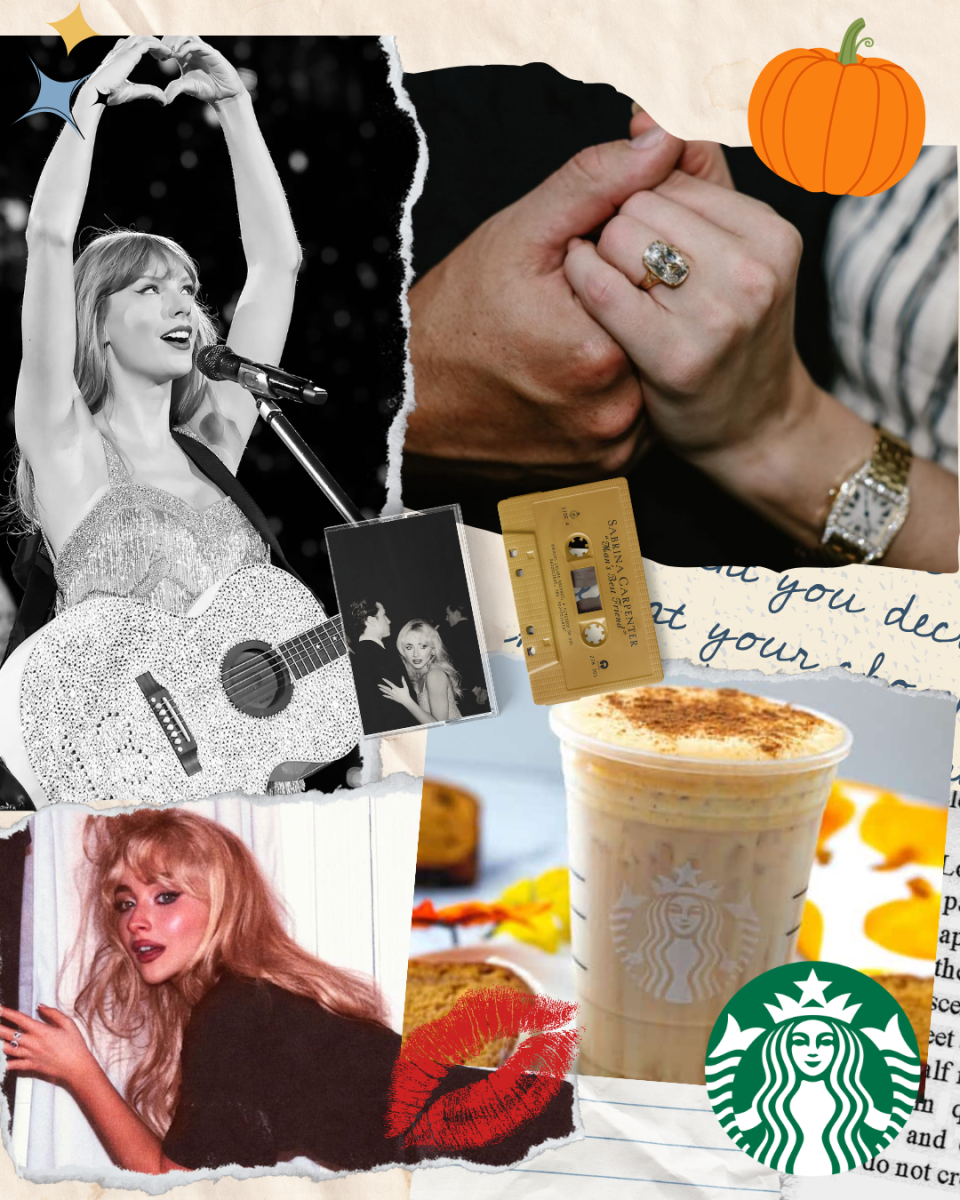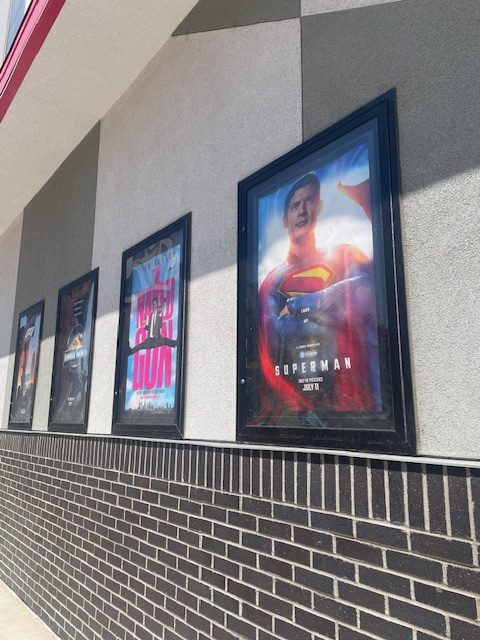Master printer Frank Janzen demonstrates proper color selection during the Crow’s Shadow workshop.
A student is bent over a piece of glass, his hands smothered in paint. He has one eye closed, intensely focusing the other on a specific spot.
When he accomplishes what he intended, sophomore Ivan Colin steps back to see his work before it goes to the roller.
He looks at the combinations of orange, blue and green, considering every detail, as it gets covered with paper, ready to print.
On April 4, members of Crow’s Shadow Institute of the Arts came to Linfield to give a workshop on creating monotypes: a form of art where anything is painted on to a piece of Plexiglas, put through a roller and transferred to paper, creating a one of a kind print.
Crow’s Shadow is a non-profit organization aimed at providing opportunities to Native Americans through artistic development.
Master printer for the organization, Frank Janzen, worked with students in art classes to help them create these one of a kind prints.
“Everyone has their own style, everyone has their own way of creating,” Janzen said. “There are just so many different things you can do with this kind of art, and the students really ran with it.”
Colin agreed, saying how this form of art is incredibly therapeutic.
“There are no boundaries with this, Colin said.
“You start with a line and go with wherever it takes you. You can push different effects, use any device and once it’s done, you think what you’ve created is one way, but put it through the roller and it comes out entirely different.”
This thought process was evident throughout the entire production room.
Students made a wide variety of things, such as a handprint, faces, flowers and the Earth, all while using their own techniques.
“Everybody can do something different to express themselves, and that’s what we try to do,” Janzen said. “Art is expression, and everything is art. Everyone in here can do something, anything, and it will always come out different. It’s beautiful.”
Janzen showed the students different techniques of rolling, using stencils, shadow work and color combinations to help get them started.
Students took his instruction to heart when looking at their work. Some flicked their paintbrushes, used their hands or made ghost prints, all creating something unique.
When going through the roller, students could decide how they wanted their image to look. The harder the pressure from the press, the deeper the colors would come out on the piece.
And that’s one of the things students liked most.
The prints were their creations, and they decided how the pieces ended up and what they wanted to do to make it their own.
As Colin stepped back to look at his piece before it went through the roller, looking to see ways he could enhance the images, he tilted his head.
“I like how I can be here to create what I want and what’s important to me alongside people who feel the same with what they do,” he said.
“There’s so much to be grateful for with opportunities like this, it’s a blessing.”
Sara Miller /For the Review
Sara Miller can be reached at [email protected]

